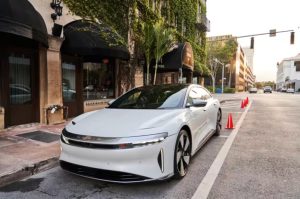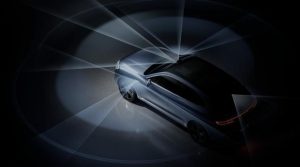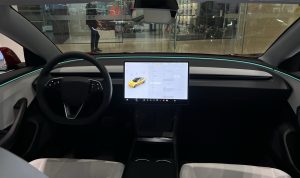The day has finally come: The EU investigates Chinese electric vehicles
7 min read
The European Commission will initiate an anti-subsidy investigation against imported electric vehicles from China.
Ursula von der Leyen, President of the European Commission, announced on September 14th that the European Commission will launch an anti-subsidy investigation against imported electric vehicles from China, with an expected punitive tariff increase of not less than 20%, currently standing at 10%.
The trade stick of anti-dumping is not unfamiliar, as in 2012, the EU and the US conducted a six-year double anti-dumping investigation against China’s photovoltaic industry. The ultimate result was that the photovoltaic industry mastered the full chain of technology from polysilicon to assembly, leading to a 10-fold reduction in the cost of photovoltaic electricity generation, reaching 0.4 RMB per kWh. The last European photovoltaic component manufacturer, SolarWorld, filed for bankruptcy twice starting from 2017.
In 2022, Chinese car companies accounted for only 3% of the European market, and in the first half of this year, Tesla accounted for 40% of car exports. Local brands still dominate 80% of the 12 million European car sales. Why use anti-dumping measures now?
It’s not the existing market share that’s alarming; it’s the incremental market share. According to KPMG data, the growth rate of new energy vehicles in the EU in the past five years has been 58%, making it the second-largest new energy vehicle growth market after China. It is estimated that the penetration rate of new energy vehicles will reach 60% by 2030, and Chinese brands will account for 20%. It’s worth noting that the automotive industry contributes 8% of the EU’s GDP and 11.5% of its jobs.
Meanwhile, Chinese brands such as BYD and XPeng have made a significant impact at the Munich Auto Show, akin to the astonishment Empress Dowager Cixi felt when she first saw a Mercedes car in 1901. User-friendly intelligent interfaces and excellent electric powertrains are reshaping how Europeans perceive and define automobiles. What do traditional European automakers rely on? Are they relying on voice recognition technology that Volkswagen still hasn’t quite figured out? Volkswagen’s $700 million investment in XPeng can be seen as a turning point in cooperation between domestic and foreign automakers, with China becoming a technology exporter for the first time.

A anti-dumping investigation targeting Chinese electric vehicles is not entirely unexpected but rather within reason.
01 Open China and Divided EU
Unlike previous instances where the EU unanimously agreed to impose punitive tariffs on Chinese solar panels, this anti-subsidy investigation faced significant difficulties right from the initiation stage due to a major rift between leading EU countries, Germany and France.
Germany, which sells one out of every three cars it produces to China, is naturally hesitant to upset its largest customer. German Chancellor Scholz refuted claims of Chinese electric vehicle price dumping just last week. The initiator of this anti-subsidy investigation, Ursula von der Leyen, is a well-known EU political figure with ties to the United States, which adds an American influence to the matter. Additionally, French automakers, with annual sales of only 1.2 million units in China, have their own motivations to push for this anti-subsidy investigation to protect their domestic market share from being eroded by Chinese automakers.
In other words, thanks to the strong ties between German automakers and the Chinese market, the outcome of this anti-subsidy investigation remains uncertain. As per the usual process, EU anti-subsidy investigations typically take 13 months, providing ample room for maneuvering.
“China becomes more open as foreign countries ‘choke’ and engage in ‘technology decoupling.’ It must expand its openness and not isolate itself,” as stated in “Unlocking the Big Country.” This concept applies not only to technology but also to markets. The attempt to establish a closed system akin to the Soviet-era COMECON will only lead to self-isolation and push Western capital and technology further away from China, creating an “exchange of market for technology” that is still suitable for China’s current development stage. Since the start of the China-U.S. trade war, China’s imports and exports have increased by 11 trillion yuan.
In the face of U.S. Entity List restrictions and long-arm jurisdiction pressure, China has chosen to open up. The policy of restricting the export of resources such as gallium and germanium was a reluctant move in response to U.S. sanctions. Data shows that actual use of foreign capital increased from $138.1 billion in 2019 to $189.1 billion in 2021. The CEO of Mercedes-Benz expressed in the Financial Times that “we do not endorse the dismantling of the world trade system and will continue to invest in China.”
02 Does China’s Export of Electric Vehicles Really Benefit from Subsidies?
Data from customs inquiries reveals that exported electric vehicles enjoy a 13% export tax rebate, similar to most exported goods. The Chinese government’s policy of exempting electric vehicles from purchase taxes applies only to domestic consumers. Therefore, the answer can only be that European automakers have high costs.
As Volkswagen’s flagship electric vehicle model, the ID.3 is priced at €39,990 in Europe, equivalent to 338,000 RMB. In China, the starting price is only 125,900 RMB, making the European price 2.6 times higher than in China.
Data shows that the average cost of an electric vehicle in China in 2022 was €32,000, whereas in Europe, the cost was nearly double at €56,000. Even when factoring in shipping and tariffs from China to Europe, European automakers’ costs are still 20% higher. This is not only due to lower labor costs in China but also because of core technology and supply chain integration.
Batteries account for 50% of the cost of electric vehicles, and China controls 70% of production in areas such as battery cells, anode and cathode materials, and refining. China holds absolute bargaining power, especially as lithium carbonate production capacity continues to rise. China’s battery costs have rapidly decreased to $132 per kilowatt-hour (kWh), and it is estimated that costs will drop to $100 per kWh by 2024. This marks a turning point where the cost of electric vehicles becomes lower than that of gasoline-powered vehicles.

With the emergence of domestic new energy vehicle manufacturers in China and the intense competition in the market, many premium features like heated seats, leather interiors, and high-end audio systems that used to be associated with luxury cars are now being included in entry-level domestic models. In comparison, imported cars appear to be low on features and high in price. For example, a Toyota Camry priced at 180,000 RMB may not even come with electric seats, leading consumers to question why they should pay the same price for an imported car without advanced driver assistance features when they could get a BYD Han with such features.
Therefore, the perspective of Reuters columnist Christie, who said, “The EU will struggle to work out which subsidies are harmful, and higher tariff barriers will only add to the burden on domestic consumers,” seems to be accurate.
However, the current cost advantage may not be sustainable in the long run. Europe is unlikely to let battery prices be dictated by others for an extended period. The EU is set to invest significant subsidies to establish a domestic battery production chain in Europe. The “New Battery Act” passed in July this year aims to create EU standards for battery production, use, and recycling. This means that the window of opportunity for Chinese automakers to expand internationally is limited, and they must act quickly.
03 How Should Chinese Automakers Respond?
Having experienced anti-dumping investigations in industries such as photovoltaics and steel, Chinese automakers were psychologically prepared when entering the international market. Regarding pricing, the BYD Han, with a dual-motor four-wheel-drive version called the “Han Sealion,” is priced at €50,990 in Europe, equivalent to 400,000 RMB, which is 120,000 RMB higher than its price in China. This provides room for price reductions and allows Chinese automakers to maintain a premium image while avoiding being targeted in anti-subsidy investigations. The pricing of Chinese new energy vehicles in the international market is set at a relatively high level, allowing them to command a brand premium. This strategy helps them stay clear of anti-subsidy investigations and preserves ammunition for potential price wars.
The decision to pursue a high-end route in international markets is also a result of previous strategic planning, which included participation in Western European auto shows to promote the brand and investments in Eastern European car factories to increase production capacity. BYD has already established over 140 stores in offline experience centers across 15 countries in Europe. In Cologne, Germany, even Tesla’s showroom has BYD’s logo installed. Sixt, a century-old car rental company, plans to order 100,000 new energy vehicles from BYD over the next six years.

The Paris Motor Show has become a showcase for Chinese automakers, with the saying that “the motor show has only Chinese electric cars and others.” At the Munich Motor Show, seven Chinese automakers occupied the best exhibition spaces. Senior BMW executives even chartered planes to attend the Shanghai Motor Show. Some employees from Japanese automakers even used tape measures to measure data like door openings and front and rear suspensions. Optimistically, the image of high-end Chinese car brands is gradually permeating and establishing itself.
Furthermore, many car companies are actively expanding their overseas production capacity to expand in international markets while attempting to avoid tariff barriers as much as possible. CATL announced an investment in building a factory in Hungary, GAC Aion signed a memorandum with Thailand, and BYD’s Thai factory began construction in March with production expected to start next year with a capacity of 150,000 vehicles, targeting the Southeast Asian market.
On the subject of new energy vehicles, China has taken the lead. However, this doesn’t mean that Chinese automakers can rest on their laurels. Many European luxury car brands are resisting the impact of new energy vehicles, and they are gradually losing their luster.
Chinese automakers need to actively seek the next breakthrough. Just as mobile phones went through the eras of Nokia and Apple, the core of the next-generation phone lies in intelligence. In the automotive world, transitioning from internal combustion engines to electric motors, intelligence will become the new frontier. Huawei’s ADS 2.0 and HarmonyOS smart cabin technology are already ahead in this regard. There’s a world of possibilities, and it requires more exploration from Chinese automakers.



